When the first signs of owls are showing in Manitoba, I can always find a way to get out and shoot them. Photographically speaking of course. In general, owls don’t like to be seen, by humans or even less, by their potential food.

When driving though the countryside in search for new owls (last weekend we clocked 500km… again), the first thing we look at is the above type of picture. The tell-tale shape of the Great Grey Owl. The fact that you see this does not mean you will get a good shot, though.
With you inside your car, the owls will not feel threatened of even observed. They will go on doing what they do best, hunt for food. As soon as you get out of the car to take a better shot with your always underpowered camera and lens, they look at you and decide if you are going to be a nuisance or not. If so, then you’d better shoot fast as they won’t stay around for longer than necessary.
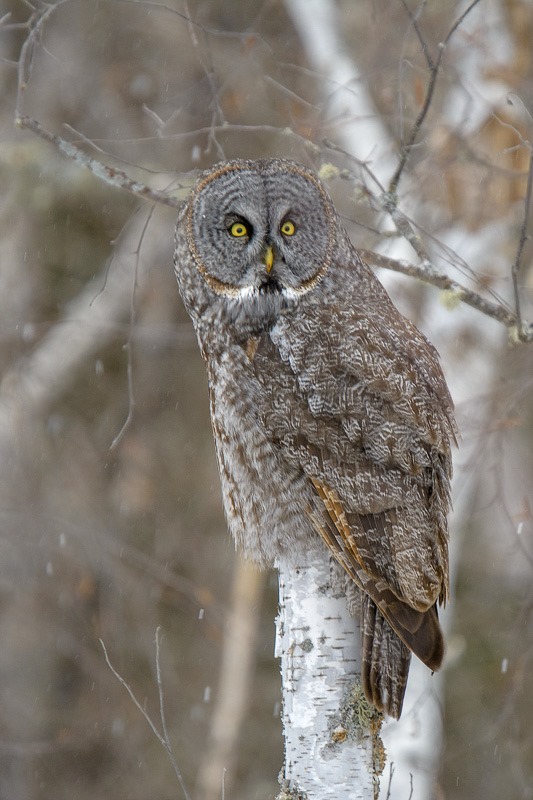
Classic shot
If they think that you’re either food or provider of food (bad, bad, bad), they may stick around. If you are neither a threat nor food, they will ignore you. Be quiet and observe. Make no noise and don’t try to make them look at you in any way. That time will come.
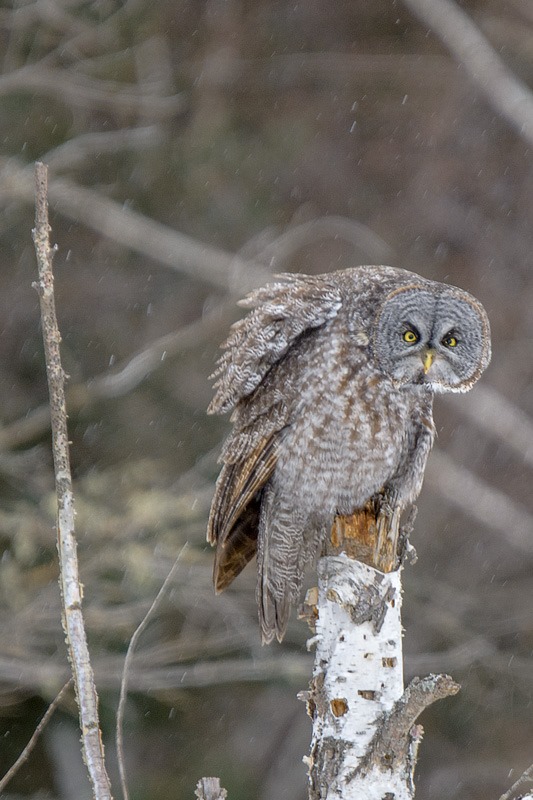
Inquisitive, but not startled
Then, once you are set up with tripod, camera, toque, hand warmers and whatnot, it’s time to wait. Observe the quiet hunt of the owl. A Great Grey Owl hunts by ear, so making squishy noises will make it look at you once or twice, then take off. If you’re quiet, you get a better reward. The bird will go about its business and ignores you. Personally I like to think it trusts me, but I have done nothing to earn that trust. A dark look as if you are a peeping Tom will sometimes come your way as well.

Where’s Waldo?
When you’re still on the road and are looking intently for Great Greys, they will most often remain undetected. The above, unedited shot will make you look twice before finding the bird. That’s the way they like it. With stealth it will be possible for them to hear and see unsuspecting meals.
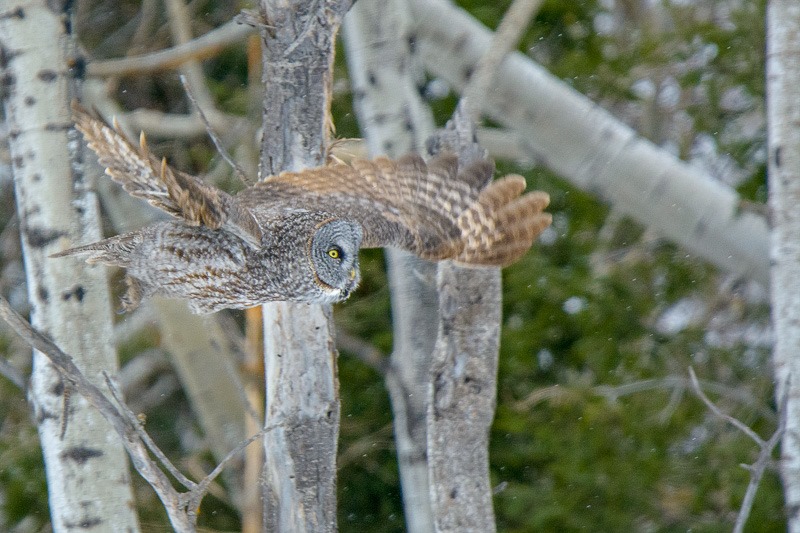
En route to a possible meal
When the meal is located under the snow, takeoff is imminent. A short flight, a bit of hovering above the area and then a plunge into the snow. That is the moment that I can catch them in flight. Most often for me, the lighting conditions are far from ideal, a 600mm f/6.3 is not exactly letting in too much light for flight shots. Blurry wingtips are then a reasonable compromise. As long as the eyes are sharp, that’s already a good start for me.
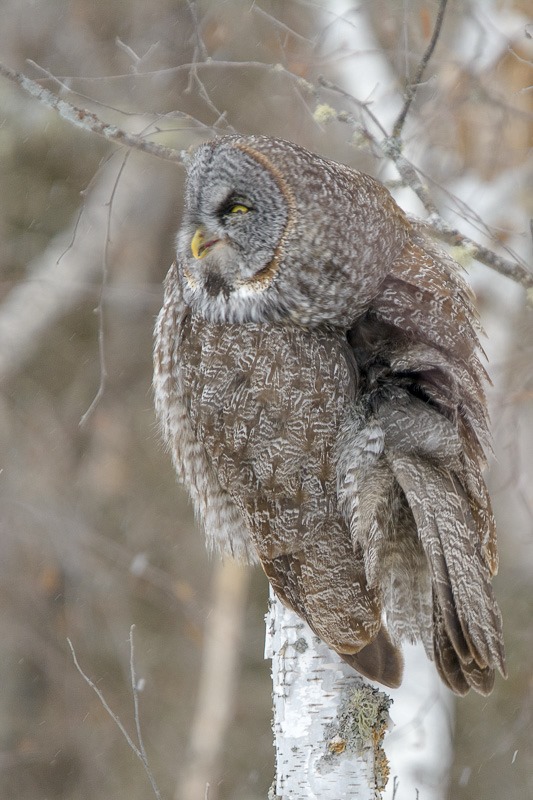
A comical look after a meal
Preening and grooming are part of the daily rituals for the birds, photographing them during that time may yield some comical expressions.
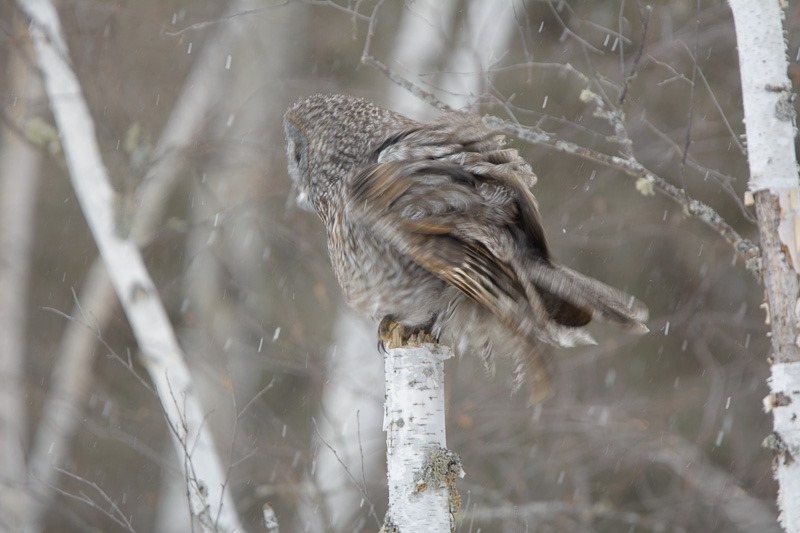
Shake shake shake
And again, when it’s time to shake off those pesky snowflakes, a slow shutter speed due to low lighting conditions does not really give sharp pictures. Here the owl is moving everything except the head. The head is still concentrated on hunting for a meal. Talk about dedication. During this shake, it looks like all the feathers are loose and could fall off at any moment.
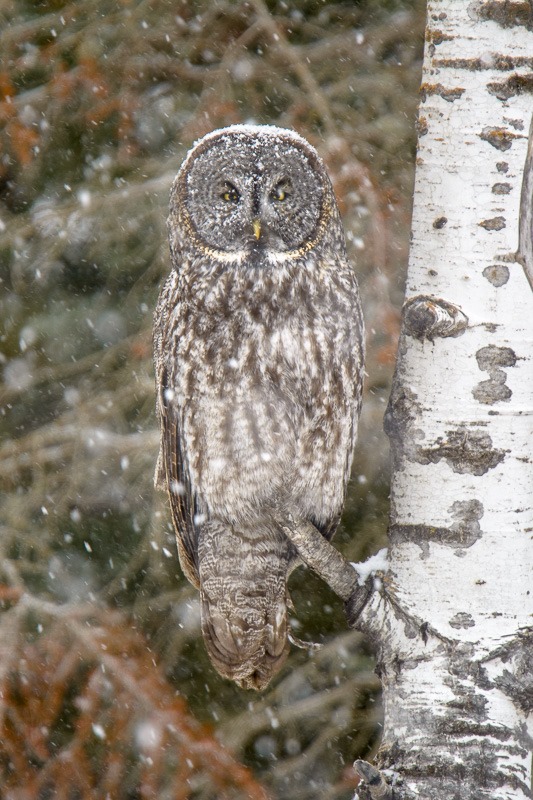
Grey or Snowy?
More often than not, though, the owl is compact and ready for takeoff. It seems like de-icing is not required for their kind of takeoff. This owl was sitting quietly in the snow, letting the flakes accumulate on its head.
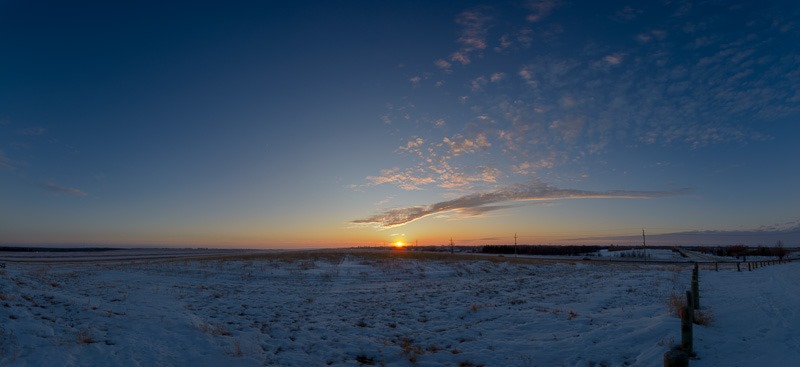
Sunset
When the snow stopped, the sun came through for a majestic sunset. So what better than to shoot that to celebrate the end of a successful owling day?
Until next time…
